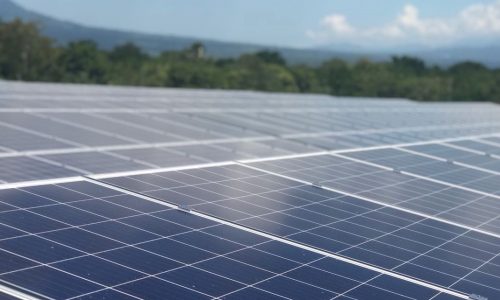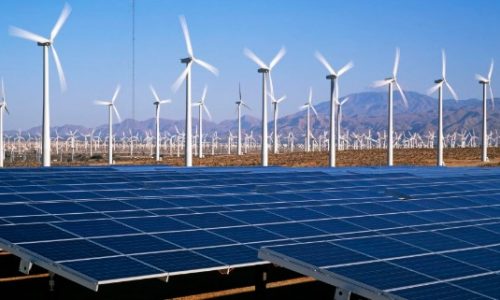Japan has committed to support Indonesia’s energy transition efforts through the Asia Zero Emission Community (AZEC) which will increase from the initial US$ 500 million to billions of dollars. However, many still criticize the funding and debts.
The AZEC initiative is based on the belief of both countries that Asia, as the center of global economic growth, will be a driving force for the world economy as well as a model for achieving a rational, sustainable, and equitable energy transition while considering different national conditions.
Indonesia and Japan also believe that supply security, affordability, and a people-oriented approach are the primary keys in the energy transition process. Japan aims to become a leading hydrogen economy in the world to reduce its dependence on traditional fossil fuels that pollute the environment, such as coal and oil.
To achieve this, Japan promises financial and technological support under the AZEC framework. AZEC members, including Australia, Brunei Darussalam, Cambodia, Indonesia, Japan, Laos, Malaysia, the Philippines, Singapore, Thailand, and Vietnam, may consider creating hydrogen and ammonia master plans in Asia as the next step.
Yudo Dwinanda, Director General of New and Renewable Energy and Energy Conservation (EBTKE), stated that the initial funding of AZEC, which was US$ 500 million or approximately IDR 7.6 trillion, will continue to increase in the future.
“At first, the funding was $500 million, but the amount will continue to rise, possibly unofficially moving towards the billion-dollar range,” he said on September 18, 2023.
Yudo hopes that funding for Indonesia’s energy transition will continue consistently, including AZEC. Indonesia is also exploring other financing schemes such as the Just Energy Transition Partnership (JETP).
“We hope that this can continue consistently. We will explore other schemes, including public funding from the United States, the EU, and Japan. We will approach all sources of funding,” he said.
In the same context, Secretary General of the Ministry of ESDM, Dadan Kusdiana, mentioned that Japan’s funding is divided into two, namely JETP and AZEC. However, for JETP, Japan does not support Carbon Capture, Utilization, and Storage (CCUS) development in Indonesia.
“For JETP, Japan does not support CCUS, but they support CCUS in AZEC. So, some of the funding may go there,” Dadan explained.
Dadan stated that the funding for AZEC is likely to increase significantly because Japan is the main sponsor of AZEC. Therefore, it is reasonable to expect that the $500 million in funding will be significantly increased. “Is US$ 500 million enough for a program with 13 countries involved?” Dadan questioned.
As a reminder, the AZEC funding was launched directly by President Joko Widodo and Japanese Prime Minister Fumio Kishida during the G20 Summit in 2022. The funding aims to facilitate Indonesia’s energy transition program and expand public-private decarbonization cooperation and initiatives.
Government not to rely too much on foreign funding
The Indonesia Clean Energy Forum (ICEF) has called on the government to implement quick and easy initiatives in the energy transition in Indonesia to avoid over-reliance on foreign funding, including the Just Energy Transition Partnership (JETP).
Bambang Brodjonegoro, Chairman of ICEF, stated that there are currently several foreign funding schemes to finance Indonesia’s energy transition to achieve the 2060 net-zero emission (NZE) target.
“However, we should not rely too much on foreign funding. Indonesia should proactively implement quick wins that can be done domestically,” Bambang said on September 18, 2023.
Bambang mentioned that Indonesia has two initiatives that can be easily achieved, but their implementation is not yet optimal.
The first initiative is the dedieselization program, where the conversion of diesel power plants (PLTD) to renewable energy sources takes place. Bambang believes that this is a good step because PLTDs are still scattered in various regions and have a total capacity of more than 3 gigawatts (GW).
He noted that PLTDs, due to their large capacity, produce significant carbon emissions, so converting them to renewable energy sources such as solar or wind, as proposed in the JETP scheme, is a positive step.
Furthermore, the second quick initiative is the co-firing of biomass in coal-fired power plants (PLTU). Bambang suggested that the government should maximize co-firing in PLTUs up to 95%.
Anita Puspita Sari, Vice President of Bio Energy at PLN Energi Primer Indonesia (EPI), explained that implementing co-firing biomass is challenging because coal-fired power plants are designed for coal. Biomass must have similar specifications to coal to be used as a substitute.
“Most biomass can only create an energy mix of 12% by 2025 because we are implementing it gradually, and PLTUs are designed for coal,” Anita said.
Clean energy funding dominated by debt criticized and insufficient
In relation to this, Bambang Brodjonegoro, Chairman of the Indonesia Clean Energy Forum recommended that the majority of funding for JETP should come from equity financing rather than debt financing.
It should be noted that most of the funding for JETP will be provided in the form of commercial loans. This includes private sector funding initiated by the Glasgow Financial Alliance for Net Zero (GFANZ) worthUS$ 10 billion.
The interest-bearing loans from private sector funding involve banks such as Bank of America, Citi, Deutsche Bank, HSBC, Macquarie, MUFG, and Standard Chartered.
“So I see that what we need to negotiate in that funding is an effort to ensure that the equity financing portion is larger than the debt financing portion,” Bambang said on September 18, 2023.
Bambang explained that even though loans from JETP funding will be easily accessible because they involve the development of renewable energy, it should not significantly increase the national debt. He believes that if the debt grows larger due to energy transition, it would tarnish Indonesia’s reputation.
“In the end, it will be talked about as if Indonesia wants to transition to clean energy, but its national debt is increasing. If you want to transition to clean energy, invite investors,” he said.
Furthermore, he suggested that the government increase the grant portion of JETP financing because the current funding is insufficient. This funding will be used as collateral for investors.
Bambang mentioned that the financing needs for the energy transition are estimated to reach US$ 100 billion. Therefore, the current JETP funding is insufficient to finance the development of the energy transition in Indonesia.
“The grant portion in JETP needs to be increased. Regardless, investors will only come if there is support or guarantees for the government. It could be a grant to make the process smooth,” he said.









